This article was co-authored by Emily Christensen and by wikiHow staff writer, Megaera Lorenz, PhD. Emily Christensen is a Shamanic Spiritual Advisor, Reiki Master, and the Founder of Rainbow Raaja based in Southern California and now King County, Washington. Emily has over six years of experience as a Massage Therapist and in using tarot cards, crystal therapy, light work (reiki, light codes, energy therapy), and shamanic healing. She received Reiki Master training from the Hands on Healing Institute. Emily is also a certified Bodywork Therapist by the California Massage Therapy Council and an Ordained Shamanic Minister with the Universal Life Church.
There are 17 references cited in this article, which can be found at the bottom of the page.
This article has been viewed 31,936 times.
“Energy healing” refers to a variety of healing practices that are thought to work by manipulating natural energy fields within the body. While it is unclear how most forms of energy healing actually work, there is some evidence that these therapies can help relieve symptoms of anxiety, depression, stress, and pain.[1]
If you are interested in becoming an energy healer or incorporating energy healing into your medical practice, consider becoming a certified practitioner of a technique such as Reiki, therapeutic touch, or healing touch.
This article is based on an interview with our spiritual advisor and reiki master, Emily Christensen, founder of Rainbow Raaja. Check out the full interview here.
Steps
Becoming a Reiki Therapist
-
1Familiarize yourself with Reiki. Reiki is a Japanese healing technique that was developed in the 1920s by a Buddhist monk named Mikao Usui.[2] Like many other forms of energy healing, Reiki involves the practitioner gently touching various points on the patient's body.[3] Scientific studies of Reiki therapy have demonstrated that it is effective for reducing pain, anxiety, fatigue, and stress, and that it may be especially useful for patients dealing with chronic illnesses or recovering from difficult surgeries.[4]
- Read up on the history and therapeutic benefits of Reiki at the Center for Reiki Research website: http://www.centerforreikiresearch.org/
-
2Find a Reiki master in your area. In order to become a Reiki practitioner, you must learn from a qualified Reiki master.[5] While there is no one organization or governing body that determines who can be qualified to practice Reiki, there are a variety of private companies and organizations that offer Reiki training, certification, and licensing.[6] Ask around among people you know who practice Reiki to find out where they trained, or do an online search for Reiki training in your area.
- You can search for a teacher or practitioner registered through the International Association of Reiki Professionals here: https://iarp.org/find-reiki-practitioner-teacher/
- Reiki originated in Japan, so finding a Master who has knowledge of the traditional practice is a plus- they will teach respect for the culture this healing art originated from, as well as teach the discipline, versatility and simplicity of the practice as well.[7]
Advertisement -
3Take a first-degree training class to learn the basics of Reiki. Although the stages of Reiki training may vary depending on your school or instructor, it is typically taught in 3 stages or “degrees.” The first degree focuses on teaching students simple techniques that they can use on themselves and friends or family. You will learn about the history and precepts of Reiki, as well as basic healing techniques.[8]
- First-degree training typically takes only 8-12 hours to complete, although some beginning courses may take longer (e.g., 1-2 days).
- The cost of first-degree or beginning Reiki training may vary depending on your teacher or school, but introductory classes often cost around $200 USD.[9]
- Training may include the basics of hand placement, meditation techniques, and hands-on practice.
- Find a teacher that connects with you and that makes you feel strongly about their skill in the Reiki practice (that certainty can only come from experiencing a session firsthand).[10]
-
4Complete a second-degree course to learn more advanced techniques. In many Reiki training programs, the second stage of learning involves the use of distance healing. These techniques emphasize using mental focus for indirect manipulation of energies, rather than directly laying hands on the body. These techniques may be useful in situations where direct touch is inappropriate or impossible (e.g., for relieving pain from open wounds).
- Different instructors or schools may have different prerequisites for second-degree training. For example, you may be required to have practiced first-degree Reiki self-care for at least 6 months or to have completed a certain number of supervised clinical practice sessions.[11]
- Check with your teacher or school to find out how long the training lasts and how much it will cost. Second-degree training may last 1-2 days to over a week, with prices varying from around $300 USD to $600 USD or more.
-
5Become a Reiki master with third degree training. The third and final level of Reiki training is mastery. Once you become a qualified Reiki master, you can both practice Reiki and teach it to others.[12] The training required to become a Reiki master is in-depth, and may take a year or more to complete.[13]
- The cost of Reiki master training may vary depending on your school or teacher, but master programs can cost around $1600 USD.[14]
-
6Establish your Reiki practice. There are many different ways to practice Reiki. Some people may prefer to limit their practice to self-care and therapy for family and friends. However, if you are a more advanced practitioner, you might consider operating a private practice from your home or a rented space.[15] Some physical therapists or healthcare providers also choose to incorporate Reiki into their regular practice.
- If you choose to become a private practitioner, consider purchasing professional liability insurance.[16]
- If you'd rather not try to set up your own business, consider working or volunteering with a clinic, hospital, physical therapy center, gym, or yoga center in your area that offers energy healing or holistic medicine services.
- Consider becoming a member of a professional organization, such as the International Association of Reiki Professionals (IARP). Members of the IARP must be practitioners (at any level) or teachers of Reiki, and must pay a membership fee. The basic yearly fee is $169 USD.[17]
Practicing Therapeutic Touch
-
1Learn the basics of therapeutic touch. Therapeutic touch is a form of energy healing that is said to work by balancing energy fields within the body. Despite what the name suggests, therapeutic touch does not involve actual touching. Instead, the hands of the healer hover lightly over the patient's body at various points. Research has shown that therapeutic touch may be helpful for:
- Reducing pain
- Alleviating stress and anxiety
- Promoting wound healing
- Improving breathing and relaxation
- Lowering blood pressure
- When used in combination with medical treatments, it may also help relieve some symptoms associated with conditions such as fibromyalgia, sleep apnea, restless leg syndrome, allergies, bronchitis, addictions, lupus, Alzheimer's disease, and chronic pain.
-
2Look for a qualified therapeutic touch instructor in your area. In order to become a qualified practitioner of therapeutic touch, you will need appropriate training. Do a search for licensed therapeutic touch teachers near you, or ask a practitioner to recommend someone.
- The Therapeutic Touch International Association maintains a list of qualified teachers and their contact information here: http://therapeutictouch.org/about-us/qualified-teachers/
- If you plan to touch clients you will need a "license to touch". There are a number of therapy fields that give you a license to touch- massage therapy, physical therapy, dental hygiene, cosmetology, even LMFT have some freedoms for touch.[18]
-
3Complete therapeutic touch training. The Therapeutic Touch International Association offers a training program for those interested in becoming qualified practitioners or teachers. Once you have connected with a qualified teacher, ask them about what you need to do to complete the necessary training. This typically involves 3 stages:[19]
- A Basic Therapeutic Touch Program of at least 12 hours, taught by a Nurse Healers-Professional Associates International (NH-PAI) Qualified Therapeutic Touch Teacher.
- An Intermediate Therapeutic Touch Program of at least 14 hours, taught by an NH-PAI Qualified Therapeutic Touch Teacher.
- A mentorship program consisting of at least 36 hours of training over a 1-year period.[20] This mentorship must be completed under the training of a Qualified Therapeutic Touch Teacher or Practitioner with at least 5 years of experience.
- Basic and intermediate TT programs may start at around $80 USD, while more advanced training workshops may cost $500 USD or more. Contact a Qualified Therapeutic Touch Teacher to find out more about the costs of training.
-
4Apply for therapeutic touch certification. Once you have completed your training, send a certification application to the Therapeutic Touch International Association. You must renew your certification every 4 years. You can complete the application online here: https://therapeutictouch.org/credentialing/
- In addition to completing Therapeutic Touch training, you must be able to demonstrate that you completed a certain amount of practice under the supervision of your mentor. You will be asked to describe your mentorship experience on the application form. You must also submit a copy of your Mentorship Agreement document, signed by you and your mentor.
- The cost of submitting a certification application is $25 USD. You must pay this fee again when it is time to renew your certification.
- You will receive information on how to renew your certification once your initial application is accepted.
-
5Establish your therapeutic touch practice. Many healthcare professionals, such as nurses, chiropractors, and physical therapists, find it useful to incorporate Therapeutic Touch into their regular practice. You might also consider working independently as a private practitioner.
- If you decide to start a private practice using Therapeutic Touch, consider purchasing professional liability insurance.
Using Healing Touch
-
1Get familiar with healing touch therapy. Healing touch is an energy healing technique that relies on gentle physical touch. Practitioners believe that healing touch works by balancing the natural energy fields in and around the human body.[21] Research suggests that healing touch can be helpful when used in combination with standard medical practices to:
- Promote relaxation and a sense of wellbeing, especially in patients dealing with stressful or difficult conditions and treatments
- Reduce symptoms of acute and chronic pain
- Reduce fatigue
- Promote wound healing
- Improve sleep
- Boost the immune system
- Relieve the symptoms of chronic conditions such as fibromyalgia and chronic headaches
-
2Find healing touch classes in your area. There are 2 major professional organizations that offer healing touch training and certifications. These are Healing Touch International and the Healing Touch Program.[22] Look for certified instructors in your area to begin the training process.
- You can find qualified teachers through Healing Touch International here: https://www.healingbeyondborders.org/index.php/find-healing-touch?st=sinstructor
- The Healing Touch Program offers a list of qualified instructors here: https://www.healingtouchprogram.com/find-an-instructor
-
3Complete a training program. In order to become a certified healing touch practitioner, you will need to complete a program consisting of several courses and a period of professional practice. The courses typically take 2-4 days to complete. During the advanced part of your training, you will work closely with a qualified mentor who will train you and observe you during your period of professional practice and development. Mentorship training lasts at least 6 months.
- Learn about the Healing Touch Program's training curriculum here: https://www.healingtouchprogram.com/classes/class-program-information. A full training package, including all training courses and certification, is available for $2,797 USD.
-
4Apply for certification. Once you have completed your training, you can apply for certification with your professional organization. In addition to completing coursework, mentorship training, and professional practice, you may also be required to pass a certification exam. Healing touch practitioners must renew their certification every 5 years.
- Learn about how to apply for practitioner certification with the Healing Touch Program here: http://www.healingtouchcertification.com/
- Certification through the Healing Touch Program costs $275 USD, with an additional $200 fee for the HTCP Entry Level Proficiency Exam. The certification fee through Healing Touch International is $325 for non-members, $250 for members.
- In order to renew your certification, you will be asked to submit evidence of an active Healing Touch practice and continuing education (e.g., records of classes you have taken and professional work you have done). You must submit a renewal form through your certifying organization.
- Renewal fees range from $125 USD-$200 USD. There may be an additional fee for late renewal submissions.
-
5Integrate healing touch into your therapeutic practice. Healing touch is meant to be used in conjunction with other forms of healing and therapy. Consider incorporating healing touch into your practice if you are a nurse, physician, physical therapist, counselor, psychotherapist, or other type of healthcare professional.[23] Work or volunteer with an institution or facility that offers holistic approaches to medicine and healing.
- If you don't have a pre-existing license, you can always do one of three options. You can become an ordained minister (you would have the freedom to provide spiritual healing touch). You can write a liability and permission waiver- giving clients the power to give you permission to lay on hands. Or you can simply do your healings hands-free.[24]
Expert Q&A
-
QuestionHow do you become a Reiki Therapist?
 Emily ChristensenEmily Christensen is a Shamanic Spiritual Advisor, Reiki Master, and the Founder of Rainbow Raaja based in Southern California and now King County, Washington. Emily has over six years of experience as a Massage Therapist and in using tarot cards, crystal therapy, light work (reiki, light codes, energy therapy), and shamanic healing. She received Reiki Master training from the Hands on Healing Institute. Emily is also a certified Bodywork Therapist by the California Massage Therapy Council and an Ordained Shamanic Minister with the Universal Life Church.
Emily ChristensenEmily Christensen is a Shamanic Spiritual Advisor, Reiki Master, and the Founder of Rainbow Raaja based in Southern California and now King County, Washington. Emily has over six years of experience as a Massage Therapist and in using tarot cards, crystal therapy, light work (reiki, light codes, energy therapy), and shamanic healing. She received Reiki Master training from the Hands on Healing Institute. Emily is also a certified Bodywork Therapist by the California Massage Therapy Council and an Ordained Shamanic Minister with the Universal Life Church.
Spiritual Advisor & Founder of Rainbow Raaja First, identify what your intention is for the practice so you can find a teacher who can guide you to pursuing and achieving those goals. Then, search for a teacher who specializes in the field you are interested in. The last step is to pursue the legal requirements for practicing Reiki. Keep in mind that not all Reiki sessions and teachers feel the same!
First, identify what your intention is for the practice so you can find a teacher who can guide you to pursuing and achieving those goals. Then, search for a teacher who specializes in the field you are interested in. The last step is to pursue the legal requirements for practicing Reiki. Keep in mind that not all Reiki sessions and teachers feel the same!
Warnings
- Energy healing is most helpful as a supplement to standard forms of medical treatment and therapy. While it may offer relief from certain symptoms, there is no evidence that it can cure diseases or heal physical ailments. Practice energy healing responsibly, and encourage your patients and clients to seek medical attention from a doctor or other qualified healthcare professional to treat any medical conditions.⧼thumbs_response⧽
References
- ↑ https://www.ahcmedia.com/articles/134837-energy-medicine-is-there-evidence
- ↑ https://reikiinmedicine.org/popular/mikao-usui-reiki-healing/
- ↑ https://www.takingcharge.csh.umn.edu/explore-healing-practices/reiki/what-can-i-expect-typical-reiki-session
- ↑ https://www.takingcharge.csh.umn.edu/how-can-reiki-help-me
- ↑ https://www.reiki.org/faqs/learning-reiki
- ↑ https://www.naturalhealers.com/alternative-medicine/reiki-training/
- ↑ Emily Christensen. Spiritual Advisor & Founder of Rainbow Raaja. Expert Interview. 8 July 2020.
- ↑ https://www.mindbodygreen.com/0-16353/the-3-levels-of-reiki-what-are-they-what-do-they-mean.html
- ↑ https://www.naturalhealers.com/alternative-medicine/reiki-training/
- ↑ Emily Christensen. Spiritual Advisor & Founder of Rainbow Raaja. Expert Interview. 8 July 2020.
- ↑ https://reikiinmedicine.org/second-degree-reiki-training/
- ↑ https://www.mindbodygreen.com/0-16353/the-3-levels-of-reiki-what-are-they-what-do-they-mean.html
- ↑ https://discover.healingtouchprogram.com/training
- ↑ https://www.naturalhealers.com/alternative-medicine/reiki-training/
- ↑ https://learnreiki.org/reiki-articles/starting-your-reiki-practice/
- ↑ https://learnreiki.org/reiki-articles/starting-your-reiki-practice/
- ↑ https://www.iarpreiki.org/page-345823
- ↑ Emily Christensen. Spiritual Advisor & Founder of Rainbow Raaja. Expert Interview. 8 July 2020.
- ↑ http://therapeutictouch.org/credentialing/qualified-therapeutic-touch-practitioner-qttp-application/
- ↑ http://therapeutictouch.org/what-is-tt/mentorship-process/
- ↑ https://www.mountsinai.org/health-library/treatment/therapeutic-touch
- ↑ https://discover.healingtouchprogram.com/htp-home
- ↑ https://pubmed.ncbi.nlm.nih.gov/11040557/
- ↑ Emily Christensen. Spiritual Advisor & Founder of Rainbow Raaja. Expert Interview. 8 July 2020.

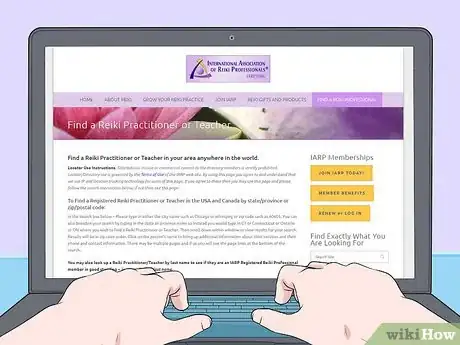


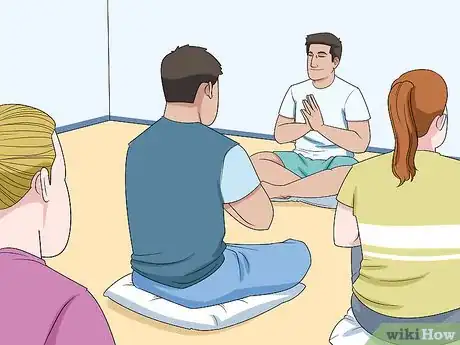
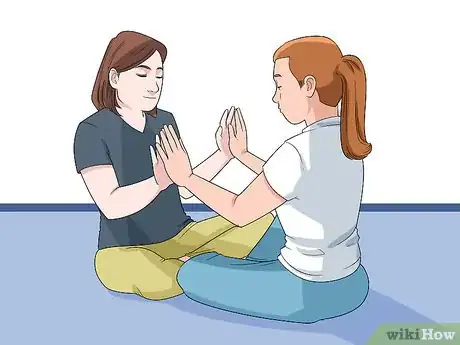


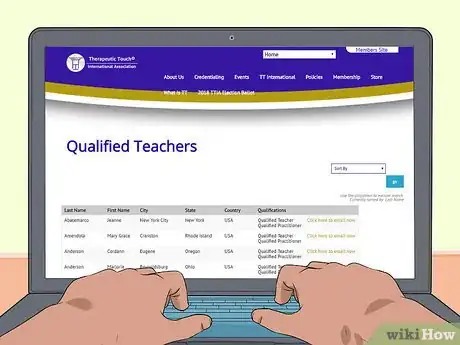
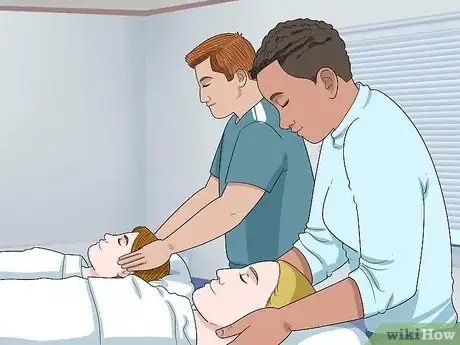


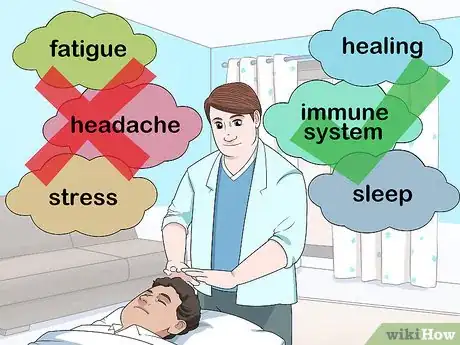
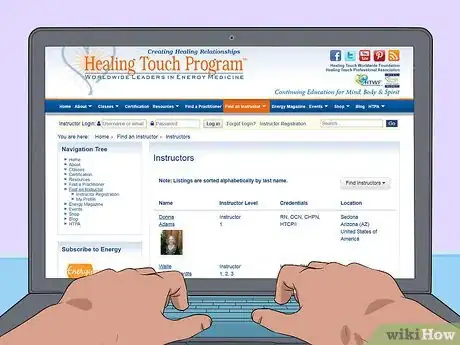
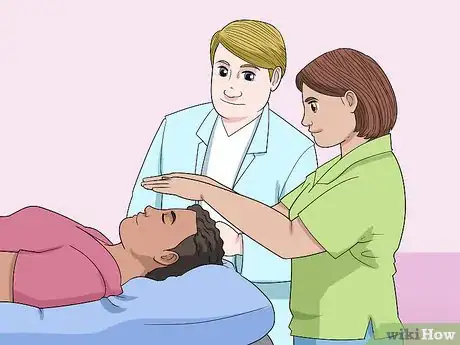

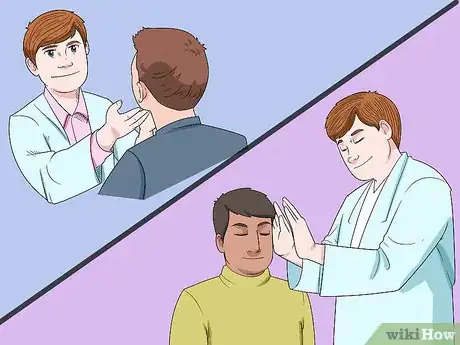




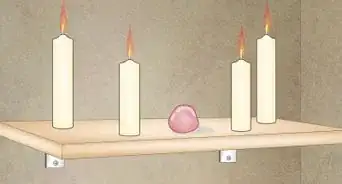

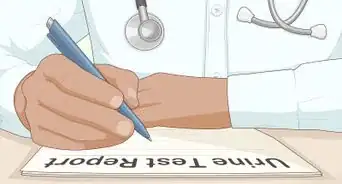


















































Medical Disclaimer
The content of this article is not intended to be a substitute for professional medical advice, examination, diagnosis, or treatment. You should always contact your doctor or other qualified healthcare professional before starting, changing, or stopping any kind of health treatment.
Read More...